 Species The Evolution of the Idea Second Edition Species and Systematics The Species and Systematics series will investigate the theory and practice of sys tematics, phylogenetics, and taxonomy and explore their importance to biology in a series of comprehensive volumes aimed at students and researchers in biology and in the history and philosophy of biology. The book series will examine the role of bio logical diversity studies at all levels of organization and focus on the philosophical and theoretical underpinnings of research in biodiversity dynamics. The philosoph of rapidly expanding data and technologies will be among the themes explored by this series. Approaches to topics in Species and Systematics may include detailed studies of systematic methods, empirical studies of exemplar taxonomic groups, and historical treatises on central concepts in systematics. Editor in Chief: Kipling Will (University of California, Berkeley) Editorial Board Sandra Carlson (University of California, Davis, USA) Marcelo R. de Carvalho (University of Sao Paulo, Brazil) Darren Curnoe (University of New South Wales, Australia) Malte C.
Species The Evolution of the Idea Second Edition Species and Systematics The Species and Systematics series will investigate the theory and practice of sys tematics, phylogenetics, and taxonomy and explore their importance to biology in a series of comprehensive volumes aimed at students and researchers in biology and in the history and philosophy of biology. The book series will examine the role of bio logical diversity studies at all levels of organization and focus on the philosophical and theoretical underpinnings of research in biodiversity dynamics. The philosoph of rapidly expanding data and technologies will be among the themes explored by this series. Approaches to topics in Species and Systematics may include detailed studies of systematic methods, empirical studies of exemplar taxonomic groups, and historical treatises on central concepts in systematics. Editor in Chief: Kipling Will (University of California, Berkeley) Editorial Board Sandra Carlson (University of California, Davis, USA) Marcelo R. de Carvalho (University of Sao Paulo, Brazil) Darren Curnoe (University of New South Wales, Australia) Malte C.
Ebach (University of New South Wales, Australia) Christina Flann (Netherlands Centre for Biodiversity Naturalis, The Netherlands) Anthony C. Gill (Smithsonian Institution, USA) Mark S. Harvey (Western Australian Museum, Australia) David R. Maddison (Oregon State University, Corvallis, USA) Olivier Rieppel (The Field Museum, Chicago, USA) Felix Sperling (Strickland Museum of Entomology, Edmonton, Alberta, Canada) David M. Williams (The Natural History Museum, London, UK) Ren Zarageta i Bagils (University of Paris 6, France) Science Publisher: Charles R. Crumly, CRC Press/Taylor & Francis For more information visit: www.crcpress.com/Species-and-Systematics/book-series/CRCSPEANDSYS Species and Systematics The Species and Systematics series will investigate the theory and practice of sys Species tematics, phylogenetics, and taxonomy and explore their importance to biology in a series of comprehensive volumes aimed at students and researchers in biology and in The Evolution of the Idea the history and philosophy of biology.
The book series will examine the role of bio Second Edition logical diversity studies at all levels of organization and focus on the philosophical and theoretical underpinnings of research in biodiversity dynamics. The philosoph of rapidly expanding data and technologies will be among the themes explored by this series. Approaches to topics in Species and Systematics may include detailed studies of systematic methods, empirical studies of exemplar taxonomic groups, and historical treatises on central concepts in systematics. Editor in Chief: Kipling Will (University of California, Berkeley) Editorial Board Sandra Carlson (University of California, Davis, USA) John S. Wilkins Marcelo R. de Carvalho (University of Sao Paulo, Brazil) Darren Curnoe (University of New South Wales, Australia) Malte C.
Ebach (University of New South Wales, Australia) Christina Flann (Netherlands Centre for Biodiversity Naturalis, The Netherlands) Anthony C. Gill (Smithsonian Institution, USA) Mark S. Harvey (Western Australian Museum, Australia) David R. Maddison (Oregon State University, Corvallis, USA) Olivier Rieppel (The Field Museum, Chicago, USA) Felix Sperling (Strickland Museum of Entomology, Edmonton, Alberta, Canada) David M. Williams (The Natural History Museum, London, UK) Ren Zarageta i Bagils (University of Paris 6, France) Science Publisher: Charles R. Crumly, CRC Press/Taylor & Francis For more information visit: www.crcpress.com/Species-and-Systematics/book-series/CRCSPEANDSYS CRC Press Taylor & Francis Group 6000 Broken Sound Parkway NW, Suite 300 Boca Raton, FL 33487-2742 2018 by Taylor & Francis Group, LLC CRC Press is an imprint of Taylor & Francis Group, an Informa business No claim to original U.S.
Government works Printed on acid-free paper International Standard Book Number-13: 978-1-138-05574-2 (Hardback) This book contains information obtained from authentic and highly regarded sources. Reasonable efforts have been made to publish reliable data and information, but the author and publisher cannot assume responsibility for the validity of all materials or the consequences of their use. The authors and publishers have attempted to trace the copyright holders of all material reproduced in this publication and apologize to copyright holders if permission to publish in this form has not been obtained. If any copyright material has not been acknowledged please write and let us know so we may rectify in any future reprint. Except as permitted under U.S. Copyright Law, no part of this book may be reprinted, reproduced, transmitted, or utilized in any form by any electronic, mechanical, or other means, now known or hereafter invented, including photocopying, microfilming, and recording, or in any information storage or retrieval system, without written permission from the publishers.
For permission to photocopy or use material electronically from this work, please access www.copyright .com (http://www.copyright.com/) or contact the Copyright Clearance Center, Inc. (CCC), 222 Rosewood Drive, Danvers, MA 01923, 978-750-8400. CCC is a not-for-profit organization that provides licenses and registration for a variety of users. For organizations that have been granted a photocopy license by the CCC, a separate system of payment has been arranged. Trademark Notice: Product or corporate names may be trademarks or registered trademarks, and are used only for identification and explanation without intent to infringe. Library of Congress Cataloging-in-Publication Data Names: Wilkins, John S., 1955- author.
Title: Species : the evolution of the idea / John S. Wilkins. Description: Second edition. | Boca Raton : Taylor & Francis, 2018. | Series: Species and systematics | Revised edition of: Species : a history of the idea. | Includes bibliographical references. | Includes bibliographical references.
Identifiers: LCCN 2017041905 | ISBN 9781138055742 (hardback : alk. paper) Subjects: LCSH: Species--History. | Species--Philosophy. Classification: LCC QH83 .W527 2018 | DDC 577--dc23 LC record available at https://lccn.loc.gov/2017041905 Visit the Taylor & Francis Web site at http://www.taylorandfrancis.com and the CRC Press Web site at http://www.crcpress.com In memory of David Lee Hull, 19352010,from whom I learned much, and by whom I wasalways encouraged, despite our disagreements. http://taylorandfrancis.com Contents SECTIONChapterChapterChapterviiviii Contents ChapterChapter Contents ixChapterChapterSECTION II Modern DebatesChapterChapterx Contents ChapterChapterSECTIONChapterChapter Contents xiChapterxii Contents Platos classification of angling..........................................................8 The Tree of Porphyry, compared with a cladogram........................... 25 Representations of the Great Chain......................................................51 The Tree of Ramus................................................................................... 63 Bonnets scale of nature........................................................................... 93 Quinarian schemes.................................................................................... 95 Lamarcks tree............................................................................... 126 Ecospecies and coenospecies......................................................... 203 Lineages, redrawn from de Quierioz................................................. 237 Phylogenetic species concepts............................................................... 242 Hennigs view of systematic relationships......................................... 245 Basic and derived conceptions of species....................................... 306 The carpet model of asexual strains.............................................. 320 Pie and Weitz simulation of speciation............................................ 322 Lateral transfer............................................................................325 Quasispecies.................................................................................. 327 Tracking fitness peaks.................................................................. 328 Contributions to species cohesion................................................329 Asexual and sexual species and niche selection............................330
http://taylorandfrancis.com Contents SECTIONChapterChapterChapterviiviii Contents ChapterChapter Contents ixChapterChapterSECTION II Modern DebatesChapterChapterx Contents ChapterChapterSECTIONChapterChapter Contents xiChapterxii Contents Platos classification of angling..........................................................8 The Tree of Porphyry, compared with a cladogram........................... 25 Representations of the Great Chain......................................................51 The Tree of Ramus................................................................................... 63 Bonnets scale of nature........................................................................... 93 Quinarian schemes.................................................................................... 95 Lamarcks tree............................................................................... 126 Ecospecies and coenospecies......................................................... 203 Lineages, redrawn from de Quierioz................................................. 237 Phylogenetic species concepts............................................................... 242 Hennigs view of systematic relationships......................................... 245 Basic and derived conceptions of species....................................... 306 The carpet model of asexual strains.............................................. 320 Pie and Weitz simulation of speciation............................................ 322 Lateral transfer............................................................................325 Quasispecies.................................................................................. 327 Tracking fitness peaks.................................................................. 328 Contributions to species cohesion................................................329 Asexual and sexual species and niche selection............................330
Next page

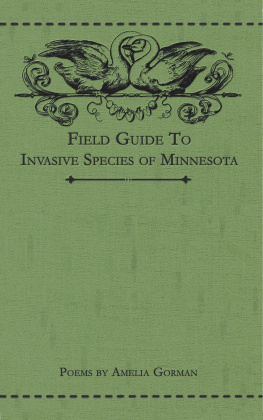
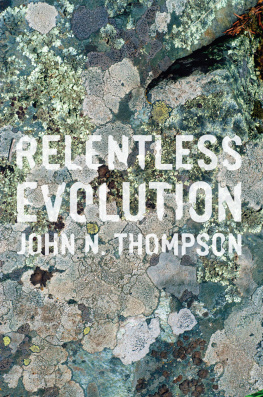
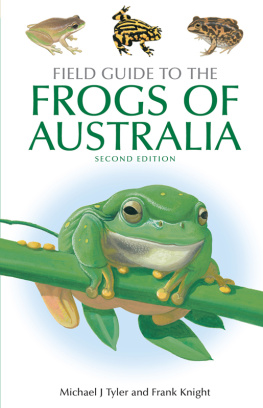

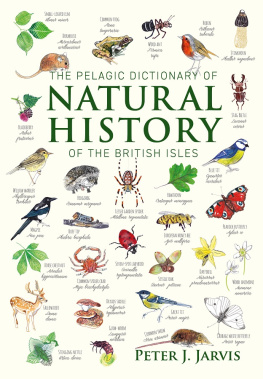


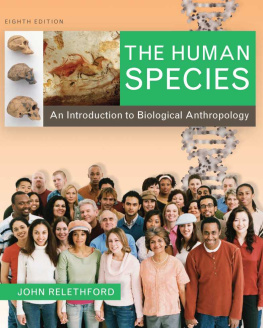
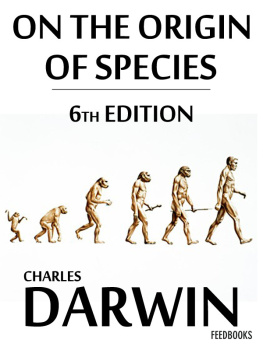
 Species The Evolution of the Idea Second Edition Species and Systematics The Species and Systematics series will investigate the theory and practice of sys tematics, phylogenetics, and taxonomy and explore their importance to biology in a series of comprehensive volumes aimed at students and researchers in biology and in the history and philosophy of biology. The book series will examine the role of bio logical diversity studies at all levels of organization and focus on the philosophical and theoretical underpinnings of research in biodiversity dynamics. The philosoph of rapidly expanding data and technologies will be among the themes explored by this series. Approaches to topics in Species and Systematics may include detailed studies of systematic methods, empirical studies of exemplar taxonomic groups, and historical treatises on central concepts in systematics. Editor in Chief: Kipling Will (University of California, Berkeley) Editorial Board Sandra Carlson (University of California, Davis, USA) Marcelo R. de Carvalho (University of Sao Paulo, Brazil) Darren Curnoe (University of New South Wales, Australia) Malte C.
Species The Evolution of the Idea Second Edition Species and Systematics The Species and Systematics series will investigate the theory and practice of sys tematics, phylogenetics, and taxonomy and explore their importance to biology in a series of comprehensive volumes aimed at students and researchers in biology and in the history and philosophy of biology. The book series will examine the role of bio logical diversity studies at all levels of organization and focus on the philosophical and theoretical underpinnings of research in biodiversity dynamics. The philosoph of rapidly expanding data and technologies will be among the themes explored by this series. Approaches to topics in Species and Systematics may include detailed studies of systematic methods, empirical studies of exemplar taxonomic groups, and historical treatises on central concepts in systematics. Editor in Chief: Kipling Will (University of California, Berkeley) Editorial Board Sandra Carlson (University of California, Davis, USA) Marcelo R. de Carvalho (University of Sao Paulo, Brazil) Darren Curnoe (University of New South Wales, Australia) Malte C. http://taylorandfrancis.com Contents SECTIONChapterChapterChapterviiviii Contents ChapterChapter Contents ixChapterChapterSECTION II Modern DebatesChapterChapterx Contents ChapterChapterSECTIONChapterChapter Contents xiChapterxii Contents Platos classification of angling..........................................................8 The Tree of Porphyry, compared with a cladogram........................... 25 Representations of the Great Chain......................................................51 The Tree of Ramus................................................................................... 63 Bonnets scale of nature........................................................................... 93 Quinarian schemes.................................................................................... 95 Lamarcks tree............................................................................... 126 Ecospecies and coenospecies......................................................... 203 Lineages, redrawn from de Quierioz................................................. 237 Phylogenetic species concepts............................................................... 242 Hennigs view of systematic relationships......................................... 245 Basic and derived conceptions of species....................................... 306 The carpet model of asexual strains.............................................. 320 Pie and Weitz simulation of speciation............................................ 322 Lateral transfer............................................................................325 Quasispecies.................................................................................. 327 Tracking fitness peaks.................................................................. 328 Contributions to species cohesion................................................329 Asexual and sexual species and niche selection............................330
http://taylorandfrancis.com Contents SECTIONChapterChapterChapterviiviii Contents ChapterChapter Contents ixChapterChapterSECTION II Modern DebatesChapterChapterx Contents ChapterChapterSECTIONChapterChapter Contents xiChapterxii Contents Platos classification of angling..........................................................8 The Tree of Porphyry, compared with a cladogram........................... 25 Representations of the Great Chain......................................................51 The Tree of Ramus................................................................................... 63 Bonnets scale of nature........................................................................... 93 Quinarian schemes.................................................................................... 95 Lamarcks tree............................................................................... 126 Ecospecies and coenospecies......................................................... 203 Lineages, redrawn from de Quierioz................................................. 237 Phylogenetic species concepts............................................................... 242 Hennigs view of systematic relationships......................................... 245 Basic and derived conceptions of species....................................... 306 The carpet model of asexual strains.............................................. 320 Pie and Weitz simulation of speciation............................................ 322 Lateral transfer............................................................................325 Quasispecies.................................................................................. 327 Tracking fitness peaks.................................................................. 328 Contributions to species cohesion................................................329 Asexual and sexual species and niche selection............................330